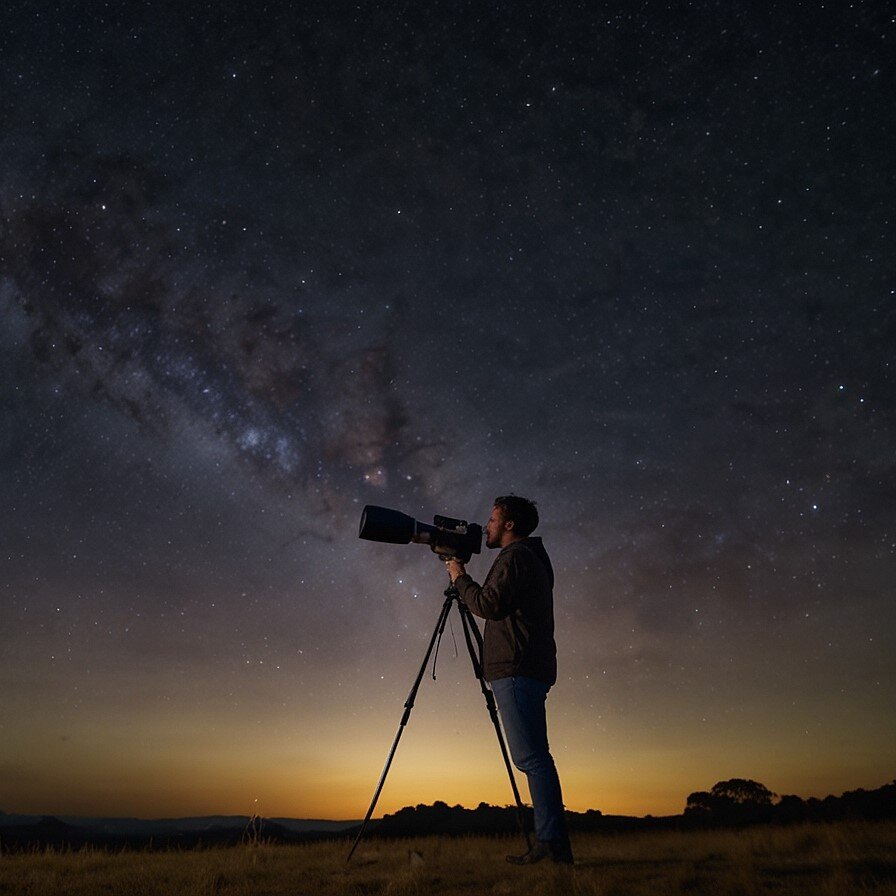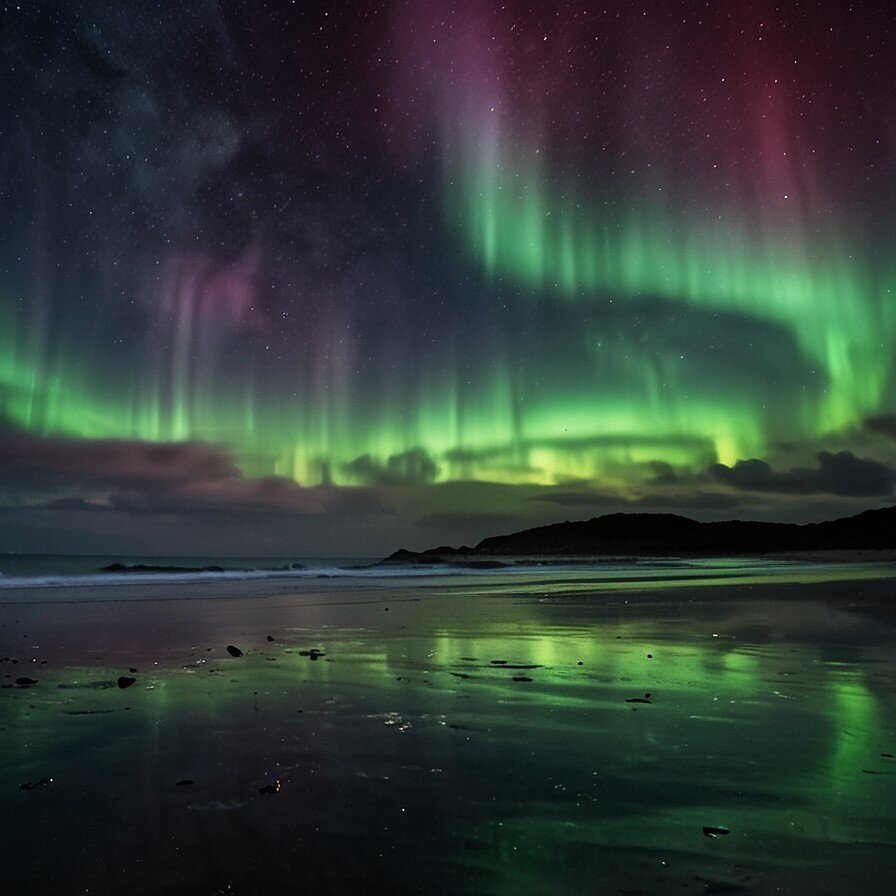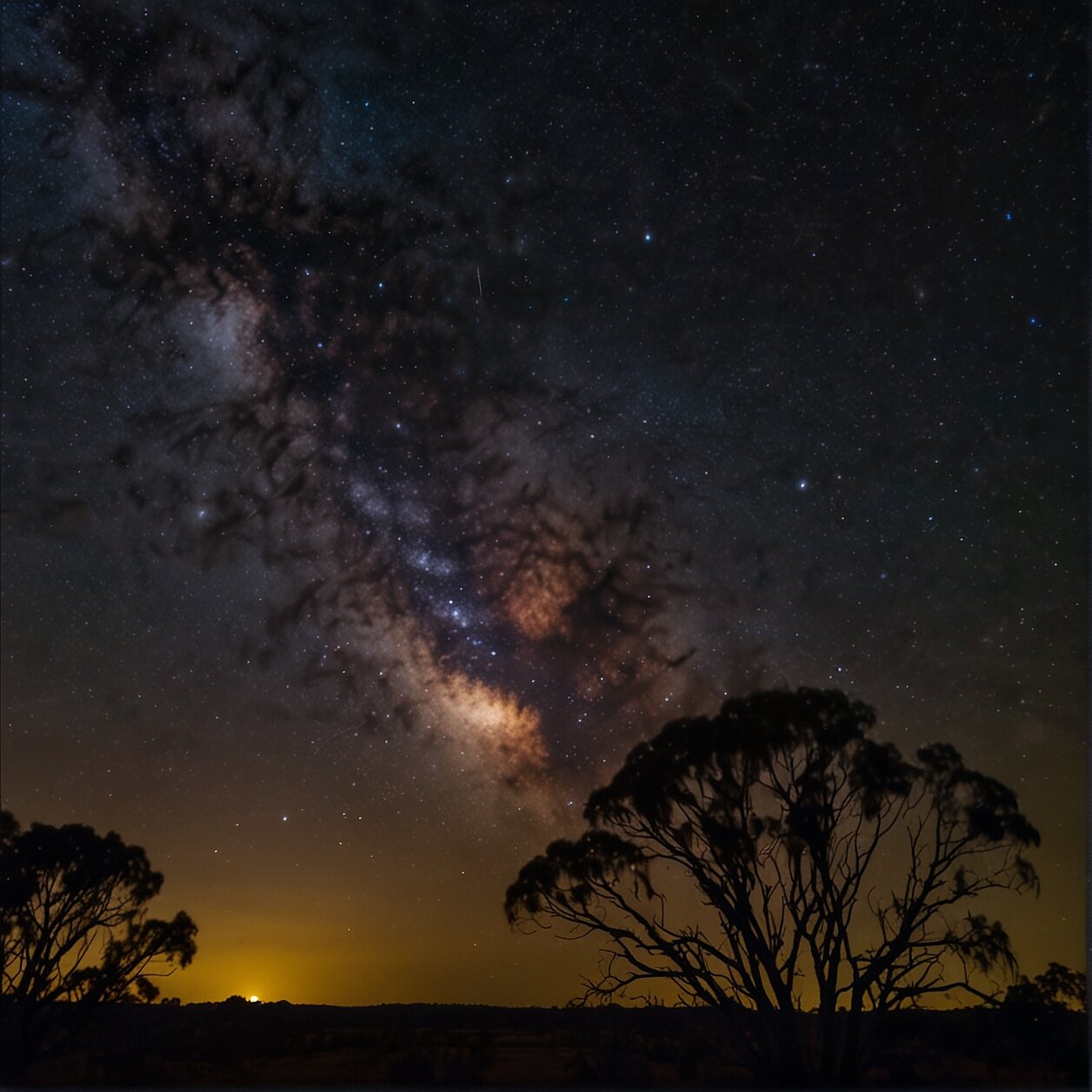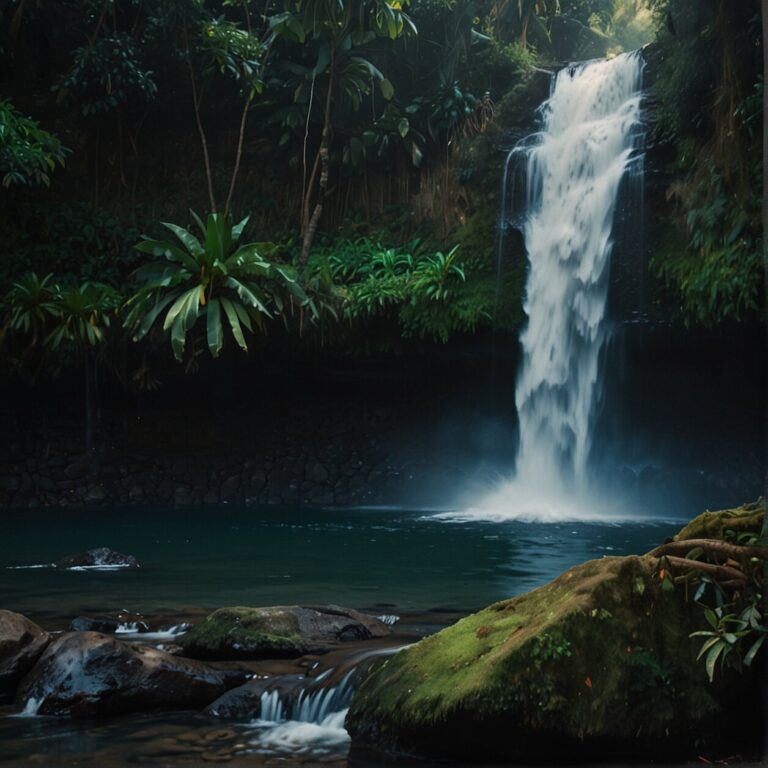Stargazing in the Southern Hemisphere: Australia’s Astro-Tourism Hotspots
Australia, the land down under, provides an extraordinary stargazing experience that is out of this world. Whether you’re an astronomy enthusiast or just a star-crossed wanderer, the celestial sphere of the southern hemisphere offers an abundance of stunning constellations and phenomena to marvel at. With the vast contrasts of harsh outback deserts and coastal cities under eerie skies, Australia is a stargazer’s dreamland.
Imagine looking up at the radiant, silver threads of the Milky Way sprawling across the dark canvas of the night sky. If you’ve been yearning for such moments, Australia’s expansive landscapes and clear skies make it one of the world’s best locations to be mesmerized by the enchanting beauty of the stars and galaxies. From the mystical Aboriginal astronomical traditions to the unique sightings of the Aurora Australis and the Magellanic Clouds, the sky is not just a limit but a whole new world in Australia.
“In the southern hemisphere, stars take center stage in the sky, offering a celestial theater that demands an audience.” – Anonymous Stargazer
So buckle up potential star travelers, as we embark on a cosmic journey filled with little known facts, thrilling experiences, fascinating locales, and practical tips to guide you through the best stargazing spots in Australia. Get ready to lose yourself in the depths of the infinite universe and experience the magnitude of Australian scenery, both terrestrially and celestially.
Understanding the Southern Hemisphere’s Unique Celestial Phenomenon
In the Southern Hemisphere, the celestial sphere appears upside down in comparison to the Northern Hemisphere’s perspective. This shift gives you a rare opportunity to witness constellations like the Southern Cross and the Clouds of Magellan, which are exclusive to this part of the world. Also, the center of our Milky Way galaxy, hidden from northern stargazers, dramatically reveals itself here. It offers a distinctive and stronger galactic center view, turning the night sky into a magical cosmic canvas ripe for exploration.
Acclaimed for its exceptional stargazing opportunities, Australia, an astronomer’s paradise, reveals crystal-clear night skies. Contributing factors such as low humidity and high altitude amplify the visual clarity of celestial bodies. The country’s astrophysical prowess is not limited to just the skies. It’s also home to the world-class astronomy research facility at Siding Spring Observatory, radiating knowledge and inspiring future generations of star explorers.
Conversely, the significance of dark, natural night skies extends beyond the realm of astronomy. The nocturnal beauty of the cosmos indirectly supports life on Earth. The seemingly endless cycle of day and night controls our natural cycles, from sleep rhythms to the behaviors of many animals and plants. An encounter with the clear, star-filled Australian night sky can indeed prove to be a humbling, enlightening experience drawing attention to our innate connection with the universe.

Experience the Magic of the Milky Way in Australia
In the heart of Swan Reach Conservation Park, nested within the River Murray International Dark Sky Reserve, lies a celestial treasure. This vast reserve spans over 3,200sqkm, offering an arena of darkness where the Milky Way reveals itself in all its breathtaking grandeur. Sheltered from the disruptive effects of urban light pollution, the night sky here portrays a clearer and more vivid picture than most places on Earth. It is not merely a sight to behold but really an experience that reaches into the depths of one’s soul. This makes it a haven for both amateur star-lovers and seasoned astrophotographers alike.
Situated in South Australia’s Murraylands region, just a 90-minute drive northeast of Adelaide, this international Dark Sky Reserve not only earns global recognition but is also Australia’s first. The reserve stretches along an 80km patch of the delightful Murray River, offering scenic backdrops that complement celestial observations like never before. Besides the grandeur of the Milky Way, you also get to be enchanted by other celestial bodies visible from the southern hemisphere.
Moreover, the Warrumbungle National Park, Australia’s first Dark Sky Park, offers an equally thrilling stargazing experience. Dark Sky Parks, be they public or private, are renowned for their outstanding starlit nights. The establishment of these unique sites signals a dedication to preserving the night sky and creating opportunities for people to engage with space in profound ways.
Both these reserves encourage explorations in various forms. You can embark on a solitary quest into the mysteries of constellations or accompany a guided tour. As you journey, you will discover new viewing areas sprinkled throughout the reserves. These specific zones enable visitors to set up telescopes, capture astonishing astrophotography, or simply lay back and get lost in the stellar wonders overhead.
With the preservation of dark skies at the forefront and the southern hemisphere’s unique celestial showcase, Australia proves itself to be a prime spot for experiencing the magic of stargazing. So why wait? Let the stars lead the way for your next adventure.
Top Stargazing Locations Across Australia
A true celestial extravaganza awaits you in the heart of Australia. Let’s embark on a journey to some of Australia’s top stargazing locations.
Warrumbungle National Park: An Astronomical Haven
As Australia’s first Dark Sky Park, Warrumbungle National Park holds a special place among the stargazing community. Celebrated for its grandeur, this haven promises a mesmerizing view of the cosmos, far from light pollution. The park is also the proud home of Siding Spring Observatory, a world-class astronomy research facility, making the entire area rich with celestial life.
Unravel the Mysteries of Murraylands: The River Murray International Dark Sky Reserve
Nestled in South Australia’s Murraylands region, just 90 minutes north-east of Adelaide, rests Australia’s first internationally recognized International Dark Sky Reserve. Covering over 3,200 square kilometers, the River Murray International Dark Sky Reserve offers unbeatable views of Southern Australia’s night sky, unspoiled by light pollution.
True to its name, the reserve’s heart, the Swan Reach Conservation Park, is an ideal spot to witness the Milky Way in all its splendor. Complemented by its naturally picturesque backdrops along the 80-kilometer stretch of the Murray River, the reserve has become a hotspot for astrophotography enthusiasts.
Serving as a sanctuary for astronomers, stargazers, and nature lovers, the reserve invites you to experience the sublime beauty of space. You can plan your own adventure to explore the enchanting dark skies or opt for a personal tour or guided night-sky viewing experience with one of the reserve’s qualified tourism operators.

Capturing the Cosmos: Astrophotography in Australia
Australia’s dark skies provide a lavish tableau for astrophotography, made even more exquisite by the county’s natural landscapes. The River Murray International Dark Sky Reserve, in particular, shines as an idyllic backdrop for capturing enigmatic images of the cosmos. This astronomical nirvana traverses roughly an 80km expanse of the majestic Murray River, enabling a stunning fusion of celestial wonder with earthly allure.
Warrumbungle National Park, Australia’s first Dark Sky Park, is another iconic destination for astrophotographers. Housing the celebrated Siding Spring Observatory, the park offers uncompromised views of the night sky, undisturbed by light pollution. As the night skies unfurl their ethereal tapestry, astrophotographers find inordinate inspiration within Warrumbungle’s shadows, fueling a creative expedition beyond the mundane.
These sites and many more across the continent provide unparalleled opportunities to etch the luminous tales of the cosmos through the camera’s lens. As you plunge into these sanctuaries of cosmic wonder, remember, the art of astrophotography is not just about capturing the stars; it’s about encapsulating the universe’s profound whispers, resonating through the tranquil Australian skies.
Planning Your Astro-Tourism Adventure in Australia
Planning your astro-tourism adventure in Australia allows you to connect with Mother Nature in an entirely new way, illuminating the wonders of the cosmos right before your eyes. Whether you’re a casual observer interested in the dazzling spectacle of the night sky or a seasoned astrophotographer looking to capture the beauty of the Milky Way, Australia provides a stellar array of opportunities. The blend of rural landscapes, minimal light pollution, and breath-taking scenery creates the perfect set-up for an unparalleled stargazing experience.
An Experience Tailored to Your Preferences
For a thoroughly immersive astro-tourism experience, we recommend you approach your adventure through one of the two pathways. If you are the type who loves the thrill of exploration, opt for a self-guided journey in areas like the River Murray International Dark Sky Reserve, where the vast extent of the outback is your celestial theatre. With numerous viewing areas equipped for telescopes, you can stumble upon the universe’s enigmatic beauty at your own pace.
Alternatively, if you prefer an organized and curated experience, numerous tourism operators within the Reserve can provide personalized tours and guided night-sky viewing experiences. These professionals with their extensive local knowledge can enrich your stargazing experience, revealing the intricate wonders of the Southern Hemisphere’s night sky.
For the Astrophotographers: Capture the Cosmos in High Definition
Australia’s dark skies are not only a feast for eyesight but also offer an alluring subject for talented astrophotographers. The reserve’s natural beauty and striking backdrops along the 80km stretch of the Murray River present the perfect setting to capture the night sky’s magic in all its glory. And let’s not forget the heart of the reserve, the Swan Reach Conservation Park, where you can experience the Milky Way in its true splendor.
No matter your level of experience or preferred style, Australia’s astro-tourism offers an adventure for everyone. So, pack your equipment, adjust your telescope, and let the Southern Hemisphere’s night sky deliver an experience worth remembering.
FAQ’S
As astrotourism continues to shine in Australia, you may have a galaxy of questions spinning in your mind. Our FAQ section is here to function as your personable guide – answering common queries and offering tips to improve your celestial exploration. From tailor-made experiences to stargazing equipment, we’ll cover everything under the Australian night sky. So, let’s dive in and address these queries to ensure a sparkling experience for you.
What are the best places for stargazing in Australia?
When it comes to stargazing, you’re in luck, because Australia offers a constellation of options. In addition to Warrumbungle National Park and the River Murray International Dark Sky Reserve, there are a multitude of remarkable locations scattered throughout the country where you can gaze up at the stars and take in the beauty of the cosmos.
For instance, the Freycinet National Park in Tasmania — a veritable haven for stargazers — offers fantastic views of the Milky Way due to its low light pollution. Similarly, the Pinnacles Desert in Western Australia, with its quirky limestone formations standing stark against the star-studded sky, makes for a surreal stargazing experience.
If you find yourself in the Northern Territory, be sure to pay a visit to the Uluru-Kata Tjuta National Park. Aside from its cultural importance to the Aboriginal people, its remote location free of artificial light makes it an ideal hotspot for outdoor astronomy. Let’s not forget Coonabarabran, often referred to as the ‘Astronomy Capital of Australia’, hosting the country’s largest optical telescope.
And lastly, if you’re willing to travel further, the Norfolk Island offers an out-of-the-world stargazing experience. With almost zero light pollution, clear air, and a relatively cloudless sky, sightings of the Galactic Centre, Omega Centauri, and Southern Cross will leave you in awe. From wherever you choose to stargaze, the Australian sky won’t cease to amaze you with its bewitching beauty.
Which celestial events can be observed in the Southern Hemisphere?
In the Southern Hemisphere, Australia in particular, a variety of intriguing celestial events are typically visible. Even better, the pristine skies devoid of pollution provide an unrivaled foreground to these events.
First, the Aurora Australis—similar to its northern counterpart, the Aurora Borealis or Northern Lights—illuminate the night sky with a dazzling spectacle of dancing lights. Australia’s southernmost regions, especially Tasmania, offer the best views of this captivating phenomenon.
Secondly, the vision of the Large Magellanic Cloud is a unique affair. As a satellite galaxy of the Milky Way, this celestial body is visible mostly only from the Southern Hemisphere. Its broad appearance and pairing with the smaller Magellanic Cloud create a sight to behold.
Besides, meteor showers such as the Eta Aquarids—debris from Halley’s Comet—are usually visible in the Southern Hemisphere. Always more impressive when observed from a place with little light pollution, these events provide a grand spectacle for both casual observers and ardent sky-watchers.
Lastly, but certainly not least, the Southern Hemisphere is treated to an exclusive view of the center of the Milky Way galaxy. Its celestial extravaganza spills across the sky, offering onlookers an unobstructed spectacle of our own galaxy.
These are just some of the unique and awe-inspiring celestial events that sky-watchers can anticipate in Australia and its environs. Each provides a unique and memorable experience, a testament to the grandeur of our universe.
How is stargazing different in the Southern Hemisphere compared to the Northern Hemisphere?
The Southern Hemisphere offers a different perspective on the night sky compared to the Northern Hemisphere, due to the Earth’s axial tilt and position during its orbit around the sun. Intriguingly, the Southern Hemisphere’s night sky features more notable celestial bodies, including the mesmerizing center of the Milky Way.
In Australia’s serene landscapes, the vastness of the universe becomes astonishingly visible. The summer months, from December to February, are particularly spectacular for stargazing as they present the Large and Small Magellanic Clouds – two irregular dwarf galaxies visible to the naked eye.
Home to the River Murray International Dark Sky Reserve, Australia offers idyllic locations to explore the southern celestial wonders. Stare into the depth of cosmos, observe the stars’ movements or partake in scientific research; the opportunities for sky gazing are phenomenal.
A unique celestial event, the Aurora Australis or southern lights, is another highlight of Australian stargazing. These ethereal lights, seen predominantly in the southern latitudes, paint the sky in shades of green, red, and purple, creating an unforgettable visual feast.
Plus, with the right equipment and conditions, you might just get a glimpse of the elusive Zodiacal Light – a faint, roughly triangular, diffuse white glow seen from within a large angle along the ecliptic, caused by interplanetary dust reflecting sunlight.
Given the differences in the celestial bodies available to see in each hemisphere, the stargazing experience truly varies depending on where you are in the world. And with its wealth of dark sky locations, and fascinating astral events, Australia’s Southern Hemisphere provides a notable edge for astronomy lovers.
What are some tips for stargazing in Australia?
The journey into Australia’s star-filled skies is both mesmerizing and enriching, but there are a few tips you’ll want to keep in mind to maximize your celestial exploration. To assist you, here are some recommendations to consider while on your star-gazing adventure.
Firstly, to truly experience the majesty of the Southern Hemisphere’s night sky, you should seek locations that are free from light pollution. The darkness will provide a clearer view of the cosmos. This makes designated Dark Sky Parks or Reserves the ideal spots for stargazing in Australia.
Another important factor is the weather. Australia’s crystal-clear nights, low humidity, and high altitudes contribute to spectacular stargazing. Hence, keep an eye on the forecast, nights with less cloud cover will provide the best viewing opportunities.
A full moon might be beautiful, but it will outshine many celestial bodies. It’s best to plan your stargazing endeavors on nights with a new moon or at least when it’s not full. This advice is especially helpful for astrophotographers, who might struggle to capture the night sky’s wonders during a full moon due to excessive brightness.
Consider bringing some essential equipment, including a comfortable camp chair or blanket to lie on, warm clothing, a red-light torch (which won’t disrupt your night vision), and of course, a star map or astronomy app to help identify constellations and celestial bodies.
Last but not least, patience is required to fully enjoy stargazing. Your eyes take around 20 minutes to fully adapt to the dark, so give yourself enough time to adjust before you begin gazing upwards.
Following these tips will enhance your experience under Australia’s breathtaking night sky, allowing you to fully appreciate the celestial splendors that the Southern Hemisphere has to offer.
What equipment do I need for stargazing?
Stargazing in Australia’s beautiful locations doesn’t require a lot of complicated equipment. With the country’s superbly dark skies, often all you need are your eyes and a bit of patience. However, there are a few items that can certainly enhance your stargazing experience.
A sky map or sky guide app is your first essential tool. It helps you navigate the night sky, identify constellations, and even spot satellites or the International Space Station. Apps vary, but most use GPS to provide real-time guides of the sky above you. Star Walk, SkyView, and Night Sky are some trustworthy options available.
Binoculars are a highly recommended piece of kit for stargazing. Even a basic pair can provide impressive views of the moon’s craters, Jupiter’s moons, or the fuzzy blur of a distant galaxy. Look for models with a wide field of view and good light-gathering capacity, and always mount them on a tripod for stability.
If you want to delve deeper into the cosmos, a telescope is your best bet. Telescopes come in different sizes and types, but a good entry-level option is a Dobsonian. These offer a lot of light-gathering power for the price, perfect for viewing dim nebulae or clusters.
Finally, don’t forget some practical items. Dress in layers to stay warm on cool nights, bring a red light torch to preserve your night vision, and pack some snacks and water to keep you comfortable while you enjoy the star show.
Remember, the most important thing is the experience—no amount of equipment can beat a clear, dark sky and a sense of wonder!







